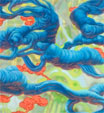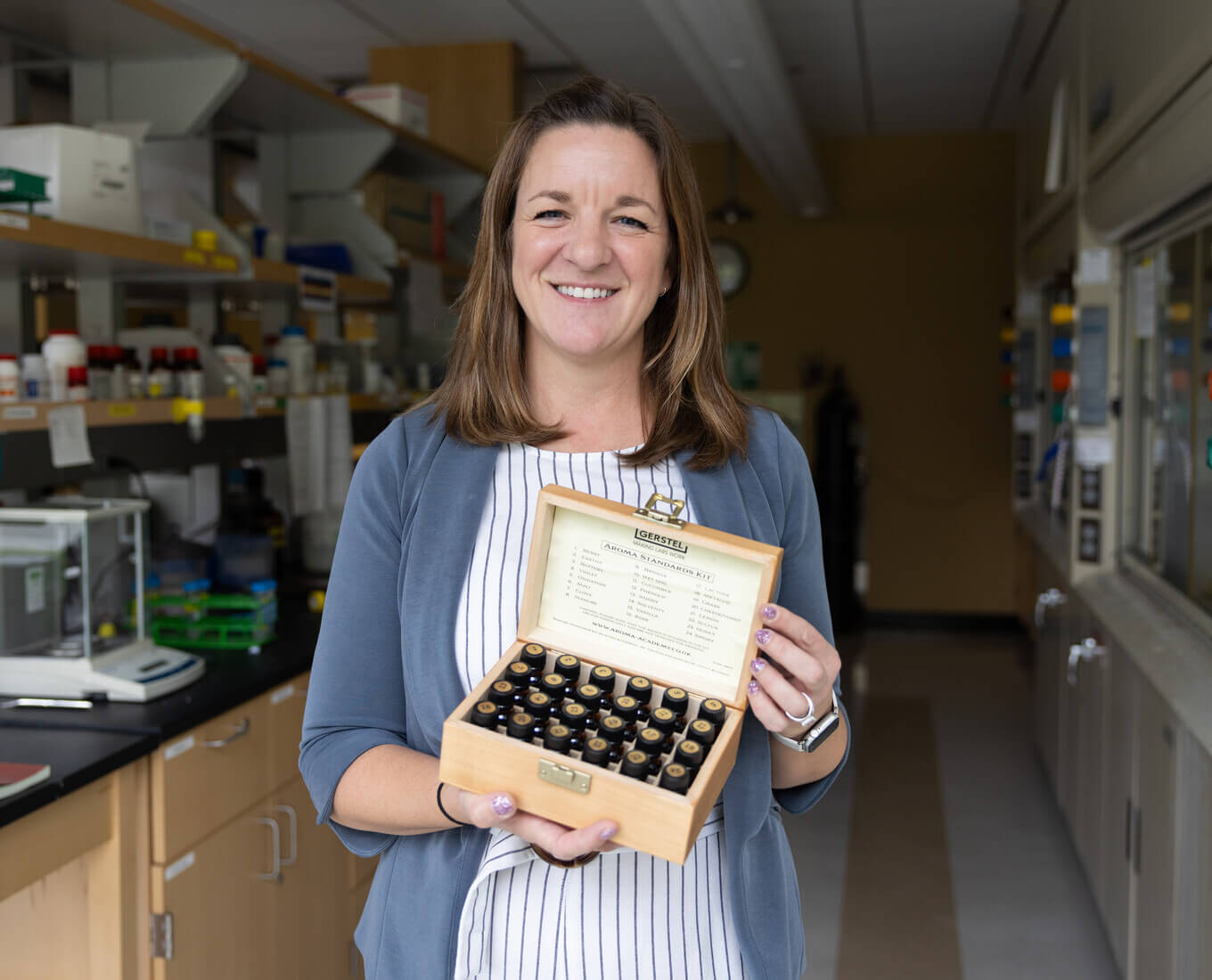 Pressed by curators unfamiliar with her work to describe her art quickly but accurately, Cristi Rinklin calls it “techno Baroque surrealism.”
Pressed by curators unfamiliar with her work to describe her art quickly but accurately, Cristi Rinklin calls it “techno Baroque surrealism.”
It’s an apt description. The Baroque period is an art style of the 17th century in which artists sought movement, contrast, emotional intensity, and variety in their works. Rinklin, assistant professor of visual arts, is inspired by Baroque art, but her work — which will be on view in three different New England venues in January — is informed by 21st century concepts.
“I want my paintings to give the viewer the feeling that they are being transported to a place that could not possibly exist in reality, but through the painting it could,” she explains. “I’m very interested in this idea of abstraction and this idea of space that is very heightened and fantastical, but that also has this sense of believability. You know this space can’t exist, but you could buy into this factor that it could.”
Rinklin’s paintings are colorful and layered with many images. They awake the senses. They give the sensation that one is stepping into a different world. They address technological and scientific changes in the new century by merging the dreamlike 17th-century Baroque art forms into works of art that represent the way people view the present-day world.
“I’m a contemporary artist, but I’m very interested in the Baroque era where the art pulled the viewer in in a psychological way. What’s interesting to me as a 21st century artist looking at the Baroque period — its paintings, architecture, ornament and sculpture — is infusing my work with this style. In the 21st century, artists are becoming more and more interdisciplinary, drawing on science, technology, and medicine.”
Appropriately enough, Rinklin, who has been at Holy Cross since 2002, uses the computer to manipulate imagery in her artwork. She credits Margaret Nelson, academic computing support specialist at the College, for assisting her in software experimentation and the use of large format archival ink jet printers.
“I’m a painter, but I’m also linked to the process of installation and I’m also working with digital imagery,” she says. “I find it interesting how this period is having an impact on contemporary art. On a personal level, these spaces are about saturation and seduction. My work is very intense — there’s nothing minimal about it.”
No doubt. The site-specific installation Nuvolomondo, running through May (extended from its previous January closing), is splashed across the walls and windows of the Tufts University Art Gallery’s Harry Remis Sculpture Court. The installation’s title (a neologism meaning “cloudworld” in Italian) and concept are derived from her stay in Rome as a visiting artist and scholar in residence at the American Academy. Her visit inspired her to create this contemporary interpretation of Baroque ornament, architectural details and stained glass panels.
While her other shows may not physically engulf the viewer the way Nuvolomondo does, the vibrant colors, layered sources, and abstract imagery absorb the senses just the same.
Running through the end of January, Heidi Hove Pedersen + Cristi Rinklin at the RHYS gallery in Boston, allows viewers to witness her work in a more compact form with a similar eye-popping impact.
“During the Baroque period, a lot of the painters like Caravaggio addressed space as something that extended out to the viewer. Baroque painting allowed space to move forward, moving it up without geometry but using clouds, form and bodies,” she says.
Lincoln’s DeCordova Museum and Sculpture Park will be the site of an exhibition featuring works by artists whose imagery is informed by contemporary issues. Titled Big Bang! Abstract Painting for the 21st Century, Rinklin, whose work will also be displayed, is partly responsible for its materialization.
“It’s really great to be a part of this show because this exhibition tackles the ideas of what abstraction means in the 21st century,” she says.
Rinklin’s work has not gone unnoticed by the media. In an art review, the Boston Globe says Nuvolomondo “glows and rollicks; it washes over the viewer the way clean ocean waves roll onto the beach.” Her Phantasmagoria painting show last year at Boston’s Green Street Gallery was named one of the region’s best gallery shows of 2005 by the Boston Globe. The show “sprang rambunctiously across centuries and through visual ideas. Baroque danced with digital imagery; Rorschach blots, cartoon through bubbles and architectural ornamentation all joined the game. The paintings were gleefully ambitious and easy on the eye.”
Rinklin moved from Minneapolis, where she earned her MFA from the University of Minnesota with an emphasis in painting and drawing, to Boston about five years ago. In addition to her teaching at Holy Cross, she’s been working to get her name recognized. Her work has been exhibited at The Drawing Project at the Bernard Toale Gallery, Boston, the ABWO Gallery, Rome, and the New York Center for Art and Media Studies, among others.
Baroque Art Meets the 21st Century
New England galleries showcase Rinklin’s critically-acclaimed artwork
Read Time
4 Minutes
